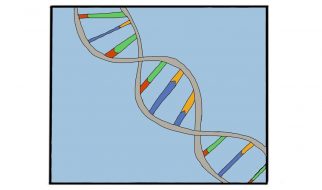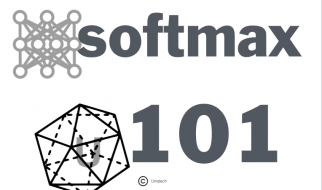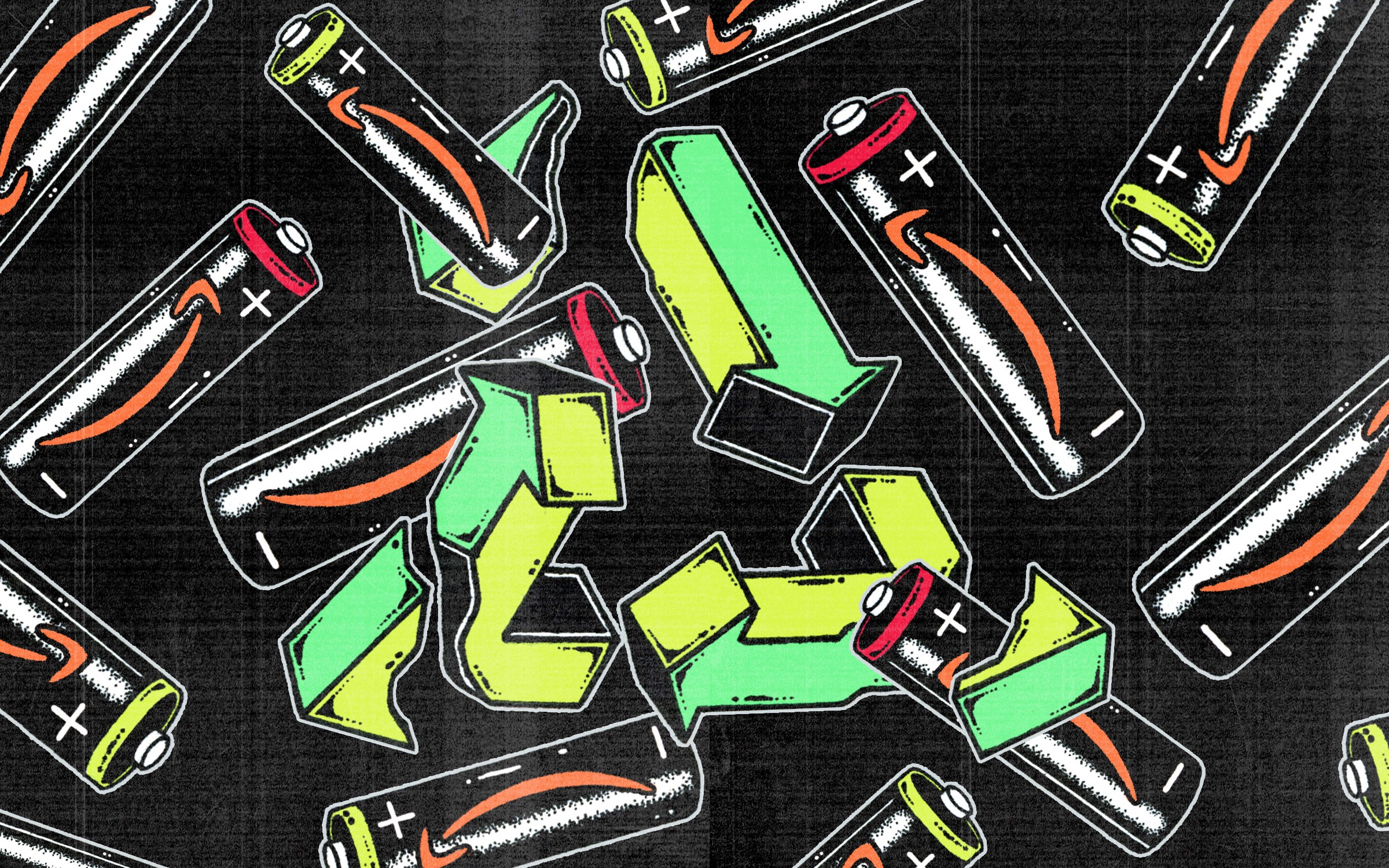 Illustration: Kelsey Niziolek
Illustration: Kelsey Niziolek
One of Amazon?s smallest and most popular products has a surprisingly large footprint
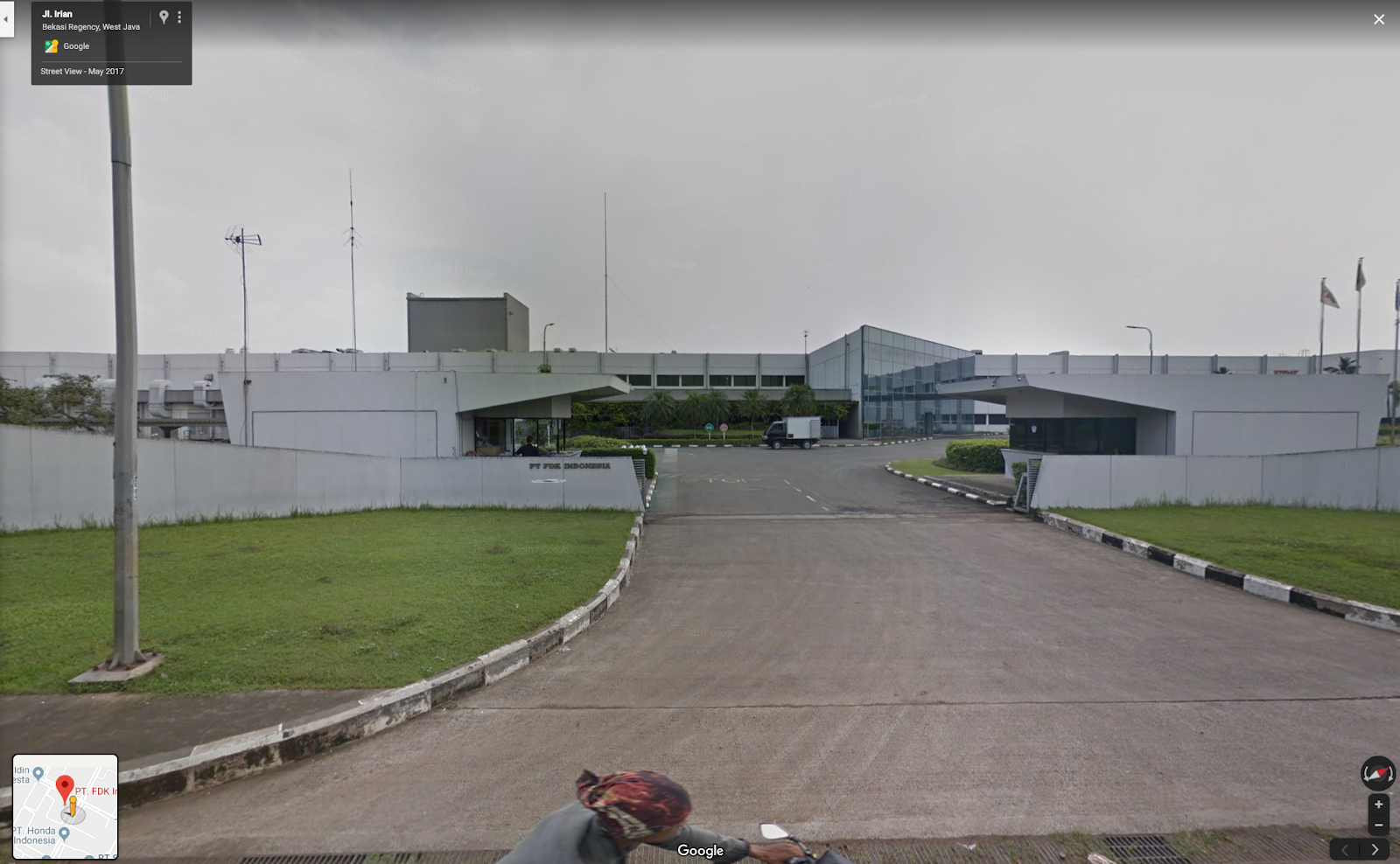 The Fujitsu building in West Java, Indonesia. Photo: Google Maps
The Fujitsu building in West Java, Indonesia. Photo: Google Maps
Fujitsu is one of the world?s oldest information technology companies, founded in 1935 in prewar Japan, with its roots in one of the country?s industrial zaibatsu, or family-owned business monopolies. The company went on to create Japan?s first homegrown computer and today boasts a global retail empire of hardware, software, and personal gadgets. In 1989, FDK expanded into Indonesia as FDK-Intercallin, eventually opening a production plant there ? becoming the sole maker of Fujitsu alkaline batteries outside of Japan.
According to historians, Japan is revered for perfecting the modern battery?s secret sauce: a finicky black powder called electrolytic manganese dioxide that helps to cycle energy through the device.
?The Japanese were early in figuring out how to manufacture electrolytic manganese dioxide,? said Jay Turner, a professor of environmental studies at Wellesley College. The product had always required pristine manganese dioxide, a compound that was difficult to mine without impurities. ?But around World War II, they figured out how to manufacture a pure form of it that?s better than the natural stuff.?
All the experts OneZero spoke to said that Indonesia, a nation of 264 million people, is not a huge player in the battery industry, which has long been dominated by countries like China, Japan, and Korea. Amazon?s investment in a Southeast Asian market, therefore, is peculiar.
?If anything, Amazon should have greater control over its AmazonBasics supply chain? The fact that they haven?t been doing this for so long is kind of suspicious.?
FDK declined to comment on the conditions of its Indonesian factory. Lax environmental standards may be one explanation for the factory?s location. Other factories in Bekasi are responsible for carcinogenic air pollutants and putrid river waste. Fujitsu?s sustainability report shows that its Indonesian operations are among the dirtiest, ranking the highest on waste production. In 2016, its Bekasi site produced 100 tons of waste more than the next worst producer, FDK Energy.
?On the Indonesian regulation front, I would say if anything it?s limited or not well-enforced, so the risks are low [for a company like Fujitsu],? said Alexis Bateman, director of the Massachusetts Institute of Technology Sustainable Supply Chains project, which aims to empower businesses to adopt sustainable development strategies through research.
Indonesia has another quality that?s a boon to battery makers: its deposits of precious natural resources.
Fujitsu declined to comment on the source of its battery materials and whether it?s tapping into Indonesia?s rich manganese supply. There is zero publicly available data on where the company gets its materials, save for an agreement that says it will not buy conflict minerals (tantalum, tin, gold, tungsten, and cobalt) from suppliers that fund human rights abuses. But battery analysts say that companies such as Tesla and Apple, which require batteries of a very different kind, may be looking to Indonesia as resource stockpiles begin to peter out. Tesla is notably in talks to build a battery factory in Central Sulawesi; meanwhile, the Indonesian government is enforcing an export ban on nickel and copper, possibly to bolster its own battery operations.
Thanks to a product sheet, however, we know that Fujitsu?s battery is made using manganese dioxide, graphite, zinc, and potassium hydroxide. It also likely contains paper, nylon, PVC, and steel. It?s unclear what, if any, percentage of these materials are recycled or recyclable.
?The materials aren?t toxic, they don?t pose a significant threat to human health, and they?re not that heavily regulated,? Turner said. ?The alkaline is basically refined dirt in a cylinder.?
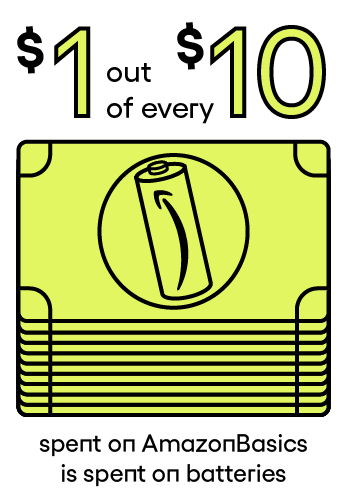
But their production isn?t so benign. Manganese is linked to human rights abuses, occupational safety violations, and child labor, according to RCS Global, a social responsibility consulting firm. Seventy-six percent of manganese comes from South Africa, China, Australia, and Gabon, RCS Global notes, but there is ?virtually no comprehensive traceability? along the supply chain. In other words, while there?s a significant chance that manganese may have been mined in abusive conditions, it?s difficult to pinpoint if a specific company is benefitting, because the mineral is filtered through a number of intermediaries. (The same is true of other minerals.)
Basically nothing is being done to address the risks of manganese production, says the Responsible Sourcing Network, a nonprofit that focuses on human rights abuses in labor. Zinc mining has also been found to release harmful emissions into the air, such as sulfur dioxide, which can be toxic to human health.
?At Amazon, we are strongly committed to ensuring that the products and services we provide are produced in a way that respects human rights and the environment and protects the fundamental dignity of workers,? an Amazon spokesperson told OneZero. ?We engage with suppliers that are committed to these same principles, and we set exacting standards for suppliers of goods and services for Amazon and Amazon?s subsidiaries.?
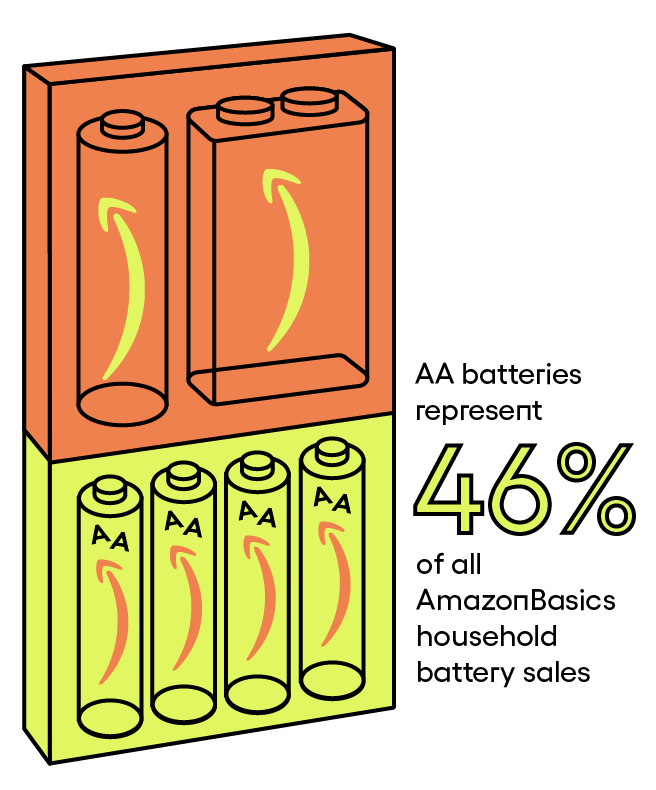
The AA battery accounts for nearly half of AmazonBasics?s battery sales, capturing 46% of those online purchases, according to data provided to OneZero by 1010data, a company that provides consumer transaction insights. One dollar out of $10 spent on AmazonBasics is spent on batteries, and the AA alkaline battery accounts for roughly 4% of the label?s overall sales. This has put AmazonBasics at the top of the online AA battery market, above familiar brands like Energizer and Panasonic.
?Amazon?s ability to aggressively market its in-house battery brand has helped it become the leader in online household battery sales, but national brands like Energizer and Duracell are competing aggressively to maintain their share,? said Matt Pace, senior director at 1010data.
Despite the battery?s widespread use, some experts say its environmental impacts are insidious and vastly underestimated. ?The greatest burden lies far upstream of the manufacturing facility itself,? in the extraction of raw materials, researchers at MIT?s Department of Materials Science and Engineering wrote in a 2011 study on the life cycle of alkaline batteries.
?Of the phases? directly within control of the battery manufacturing industry, the manufacturing facility has the largest impact [through electricity use],? the study noted. U.S. battery production sources the bulk of its energy from fossil fuels, it adds, with renewables accounting for just a fraction of these power needs. Together, sourcing and processing add up to 88% of a single-use battery?s environmental impact.
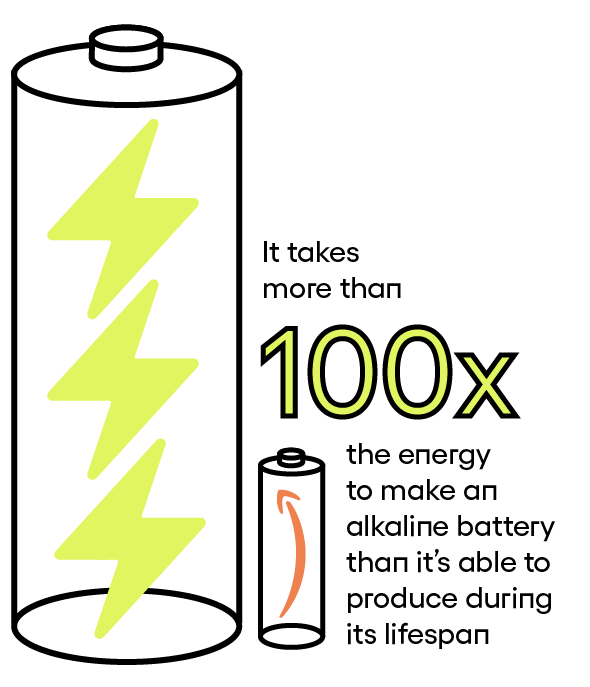
Using the MIT study?s data, Turner co-authored a 2015 paper published in the Journal of Industrial Ecology, estimating that ?it takes more than 100 times the energy to manufacture an alkaline battery than is available during its use phase.? And when the entirety of a battery?s emissions are added up ? including sourcing, production, and shipping ? its greenhouse gas emissions are 30 times that of the average coal-fired power plant, per watt-hour.
All of which is to say: An appliance powered by an alkaline battery consumes more carbon than an appliance that?s plugged into an electrical outlet, according to the study.
Still, conversations about the environmental footprint of batteries largely revolve around end-of-life disposal, recycling, and ?upcycling.? Most states allow people to throw their spent batteries in the trash in lieu of voluntary or mandatory collection programs. (California is the exception, considering all batteries to be hazardous waste, though the state offers only vague guidelines on what to do with them.) But while batteries are one of the largest sources of heavy metals in waste streams, there is no broad U.S. policy that classifies various battery types as toxic or nontoxic or that dictates their disposal. Regarding the alkaline battery, policymakers currently disagree on whether it?s harmful when landfilled, the MIT study notes.
?The problem is they?re really small and really distributed, so to collect and recycle them takes a lot of energy,? Turner said. ?By the time you?ve done this, you?ve used more energy than you?ve saved in the process.?
Fujitsu says consumers can decrease waste by replacing portable batteries with its ?long-lasting? alkaline or rechargeable batteries. Though Amazon claims to be working toward closing its own waste loop, it appears to be doing less than other prominent battery sellers to incentivize recycling. Only its rechargeable batteries contain recycling information, but Amazon says it may soon include this information for its disposable batteries as well.
The impact of an Amazon battery may seem inconsequential when compared to the company?s fossil fuel alliances, labor abuses, and billions of dollars in military contracts, but it matters at a time when Amazon claims to be doing better on climate change. In September, CEO Jeff Bezos announced an ambitious ?Climate Pledge? after several thousand Amazon employees demanded the company adopt a climate action plan. The commitment is a big one, putting Amazon on a track to reach net zero emissions by 2040 and relying solely on renewable energy company-wide by 2030. But hidden in the pledge is the fact that Amazon has only just begun to track its carbon footprint, a whopping 44.4 million metric tons in 2018, nearly equivalent to the output of Switzerland or Denmark. The company says this equation includes production ? and Amazon told OneZero that it calculates its footprint in accordance with industry standards, and that private-label items are accounted for ? but its reporting is overly generalized, combining things as disparate as ?business travel? and ?Amazon-branded product manufacturing? together under ?emissions from indirect sources.? By merging these emissions, Amazon is hiding what portion of that number originates downstream from outsourced manufacturing.
?If anything, Amazon should have greater control over its AmazonBasics supply chain,? Bateman said. ?The fact that they haven?t been doing this for so long is kind of suspicious. It?s not like they?re a new company.?
 I never discovered why my AmazonBasics batteries exploded. An Amazon spokesperson said the company had once investigated the problem, even bringing in a third-party testing lab to inspect the product?s design. ?We thoroughly investigate any and all concerns of this nature to ensure the safety of our products,? the spokesperson told me. My unused pack now sits in a cupboard, collecting dust because I don?t know how to recycle it.
I never discovered why my AmazonBasics batteries exploded. An Amazon spokesperson said the company had once investigated the problem, even bringing in a third-party testing lab to inspect the product?s design. ?We thoroughly investigate any and all concerns of this nature to ensure the safety of our products,? the spokesperson told me. My unused pack now sits in a cupboard, collecting dust because I don?t know how to recycle it.
The complexity of Amazon?s battery is concealed by its everyday utility ? ping-ponging across the globe in relative secret, which is how Amazon wants it to remain, and how it likely will.
?Why should Amazon reveal its supply chains to its competitors?? Rodrigue asked. ?Their supply chain is their advantage.?
Update: A previous version of this article misstated one unit used to measure emissions. It is a watt-hour. Also, a previous version included incorrect information about how Fujitsu?s Indonesian operations rank in terms of greenhouse gas emissions and water usage. They are near the middle, but rank highest in terms of waste production.
Have a tip about Amazon? You can contact Sarah Emerson securely on Signal at +1 510 473 8820, on Wire at sanaomie, or email [email protected] or [email protected].
